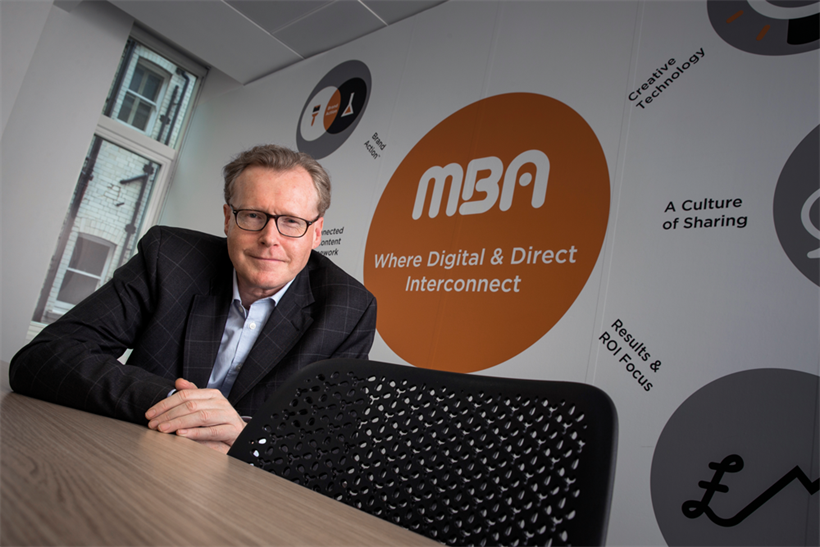
Maher…‘The key is to take separate data touchpoints and cross-reference them to build a fuller picture of your customer’
By using data to get a fuller picture of their customers, brands have the ability to give them exactly what they want, just when they want it. Their very own butler service geared to the age of personal experience
The gift of a good servant, Julian Fellowes wrote in Gosford Park, is “anticipation”. Knowing exactly what the people you serve will want, before they know it themselves, and having it ready and waiting on a tray made of an appropriately lavish material.
Nearly a century after this insight was fictionally offered by the housekeeper of an English country pile, we find it trending in the digital world. Anticipating what your customer wants and serving them the right content at the right moment – when they land on your website, for example – has become essential to the best communications. When done well, it’s every bit as popular with the recipient as sauntering into the drawing room at six o’clock to find a gin and tonic waiting on a tray, mixed just how you like it.
The road to this quasi-intimacy between brand and customer began with a simple hello. Direct marketers found that addressing something to a person by name gave it a better chance of being opened than the succinct, status-endowing but rather charmless “To the Homeowner”. Many years later, the landing pages of Amazon and its ilk applied the same thinking and began greeting returning customers by name.
Recently, however, we’ve developed the ability to move on from simply personalising communications to creating communications that feel truly personal. And it’s all thanks to everyone’s new best friend: joined-up data.
The key to creating the user-experience equivalent of the perfect gin and tonic is to take separate data touchpoints and cross-reference them to build a fuller picture of your customer.
Knowing what they looked at last time they visited the site, which search terms brought them to you, what they’ve been doing on their different devices, what content piqued their interest in their last e-mail and what stage of life they are at all help give us a fantastically Technicolor picture of how they like their gin and tonic.
And the personal feel we can give our communications stretches far beyond a landing page.
At MBA, we’ve been applying this thinking to the work we do for O2 – most recently with a hologram-in-a-box, sent to persuade prospective business clients to switch to the network.
We spent much time joining up data to make this intriguing creative technology more personal.
First, the prospective clients were carefully chosen to be people receptive to O2 Business’ key point of difference: a dedicated digital advisor for every business customer, to give them tech advice. Next, a bespoke script was written for every hologram (each of whom took the form of a digital advisor), using data from prior conversations and interactions.
This enabled the hologram to not just greet their prospect by name, but also speak in detail about what O2 could do to help their business specifically. Finally, our holographic envoy was followed up by a personal sales call to the prospect shortly after arriving on their desk. In the hologram medium, it’s a labour-intensive endeavour – but the effort was amply rewarded, with a string of prospects arranging face-to-face sales meetings to discuss switching to O2.
The more data points you can join up, the better the gin and tonic. When the technical (joining up the data), strategic (the insight it gives us) and creative (the personal touch) elements all work together, a brand is able to create a truly Gosford Park, your-Hendrick’s-and-Slimline-Schweppes-with-a-squeeze-of-lime-m’lord level of personal UX.
E-mails containing only the products you want, a website that knows your tastes and preferences, pay-per-click ads that lead you into a customer journey that matches your search intent. When you have all the necessary expertise behind the scenes, the UX in the drawing room feels seamless.
For the launch of Investec’s new mobile investing platform, Click & Invest, MBA has the rare privilege of building the communications and customer service ecosystem from the ground up – allowing us to link multiple customer data touchpoints.
When building from scratch, it should now be natural to integrate this functionality – but agencies will have to make the business case clearly when persuading clients to invest in retrofitting their legacy systems to join up their data.
Brands that invest will be rewarded, as customers have come to expect a personal experience, curated to their needs. And with any luck, soon everyone will be getting their gin and tonic just how they like it.
Future FocusWhat will the future be full of? |
This article was first published on campaignlive.co.uk

